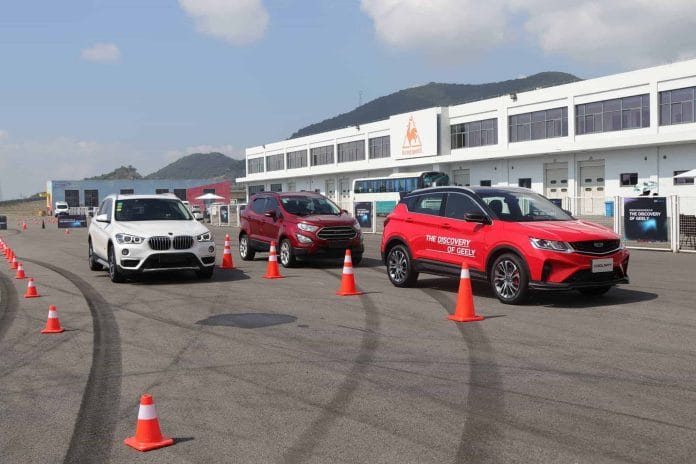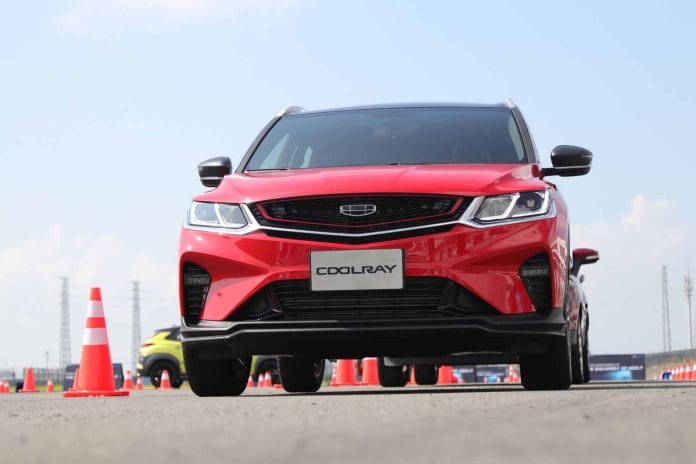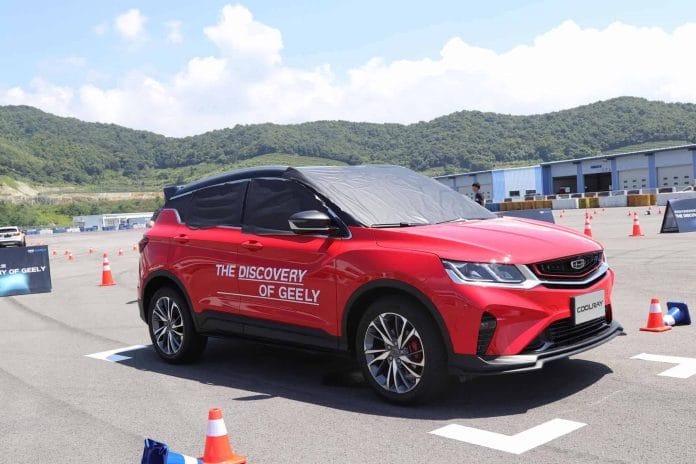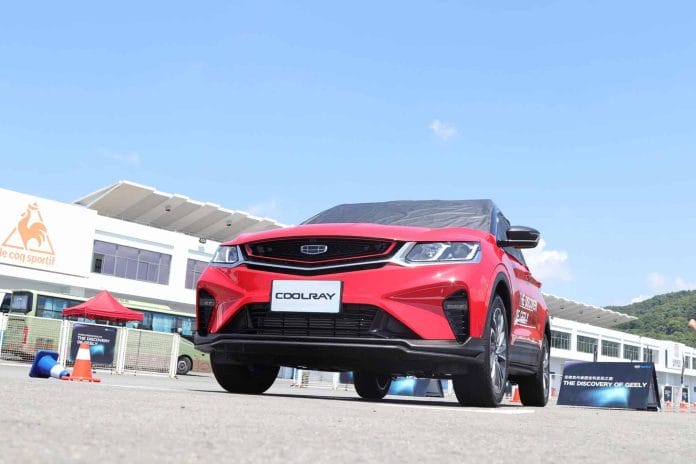As Geely’s inevitable foray in the Philippine automotive industry is set to happen by the fourth quarter of this year, Sojitz G Auto Philippines Corp., the local dealer and distributor, recently gave members of the motoring media a sneak peek of its initial Philippine offering, the ‘Coolray’ compact SUV.
To do this, we went to the Ningbo International Speedway in Beilun, Ningbo, China to check out how the Coolray would fare against some of its perceived primary competitors in the small SUV segment.

From the get-go, the Coolray (known in China as Binyue) immediately showcased what its 1.5-liter turbocharged VVT three-cylinder petrol engine mated with a seven-speed wet dual-clutch transmission with paddle shifters could do on the track.
The disparity of Coolray’s performance from the other brands at hand was palpable as I negotiated the well-placed cones around the speedtrack.

With its engine capable of generating 177 horsepower and 255Nm of torque, I was able to blaze through the course under 30 seconds without hitting a single cone, proving the agility of the Coolray in crucial corners that demand meticulous steering.



A few seconds into my test drive, my Chinese instructor asked me if I could feel the difference, to which I whispered, “Yes,” while maneuvering through the tight corners of the track.
The Coolray’s nimble nature is quite impressive, to say the least. It exhibited less body roll during a head-to-head challenge.
Aside from its stellar performance on the track, the Coolray also has a suite of features that we personally got the chance to try out before the end of the day. After the head-to-head challenge under the blazing heat of the sun, we hopped into another Coolray on the other side of the speedpark. But this time, we didn’t speed past cones but checked out how its self-parking feature works.
The Coolray’s automatic parking system, to be honest, is quite confusing at first – mainly because I could not fully understand what my Chinese instructor was saying. But thankfully, all the confusion went away when it was my turn to see how intuitive its feature is.
All that I had to do is push a few buttons and drive by the side of an empty parking slot in order for the Coolray to determine and configure its distance. And after that, I just had to hold the parking button while the Coolray did all the work for me; no need to hold the steering wheel or step on the brakes.
The nifty parking feature of the Coolray might be impressive, but Geely vehicles are also capable of autonomous driving. During our visit at one of its facilities, we were shown how a Geely vehicle could easily be summoned from a parking space to the entrance of a building using a smartphone. Yes, like your personal valet service. Aside from that, it could also autonomously drive itself towards a pre-determined destination and, like what we’ve tried before, park itself with ease.
Geely’s Automated Valet System allows its vehicles to self-park and be called like a ride-hailing platform to pick up passengers amid busy traffic intersections.
We will get to see this feature in the near future as Geely has partnered with the 2022 Asian Games to showcase its driverless vehicles during the event.
Immediately after the self-parking test, we boarded another Coolray to test out its 360-degree camera assist. In order to do so, the people of Geely covered up all of its windows, prompting us to rely on the SUV’s 12-inch screen while maneuvering through the obstacle towards a parking space. It was a like scene straight from the film “Bird Box.”


Since looking through the windows is sort of futile, the entertainment system at the center of the Coolray’s cockpit provides a 360-degree view and a 3D rendering of the immediate surroundings of the Coolray.
Set to be available by the last quarter of 2019, the Geely Coolray is expected to be priced between P1.2 and P1.3 million.
Geely has five R&D centers in Hangzhou, Ningbo, Gothenburg, Coventry, and Frankfurt and five design centers in Shanghai, Gothenburg, Barcelona, Coventry, and California employing over 20,000 research and design personnel. Geely also holds an ever-increasing number of patents and complete intellectual property rights to all of its products.
Zhejiang Geely Holding Group is the owner and co-owner of a number of foreign automotive brands, including Volvo, Polestar, Lotus, and Proton.

